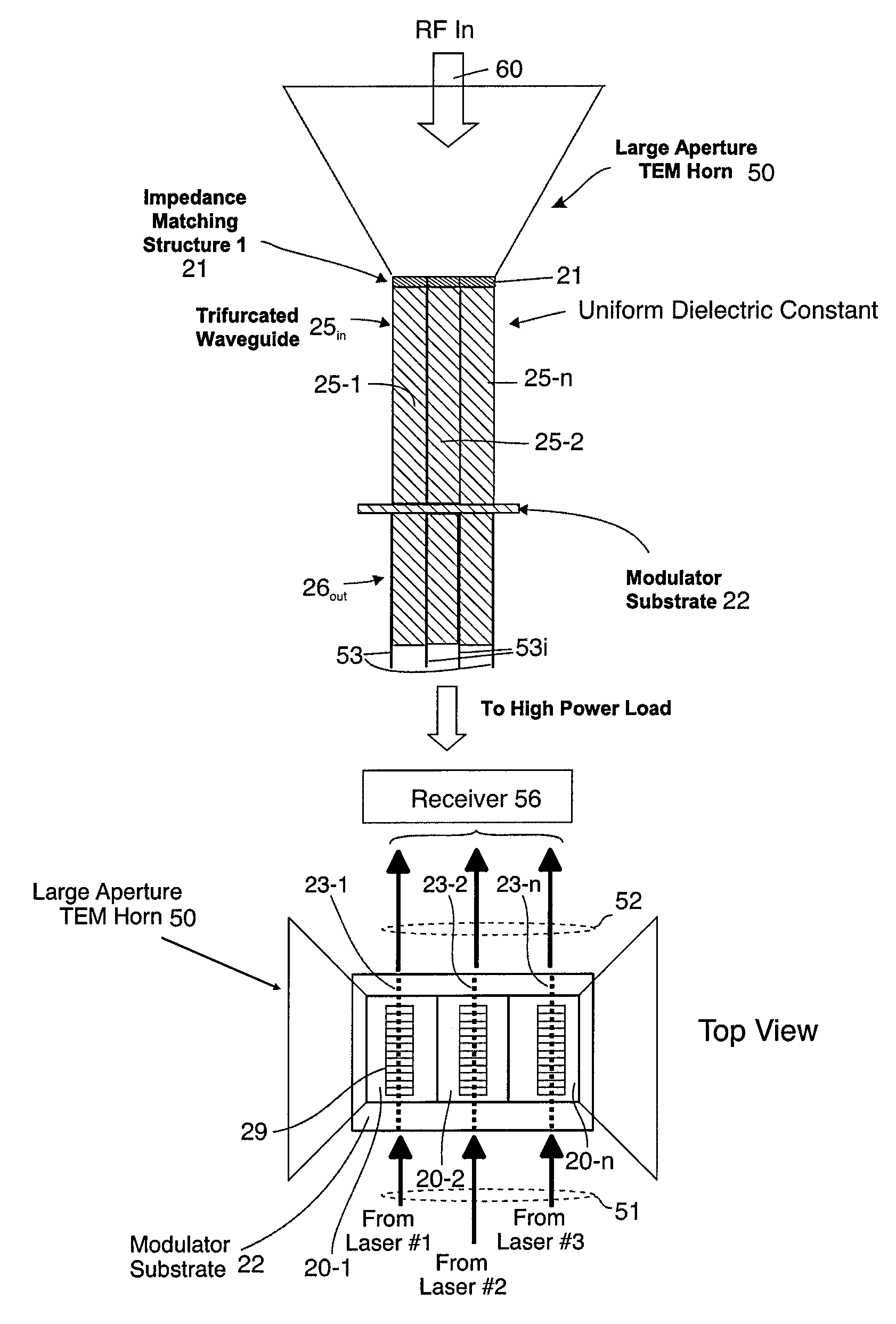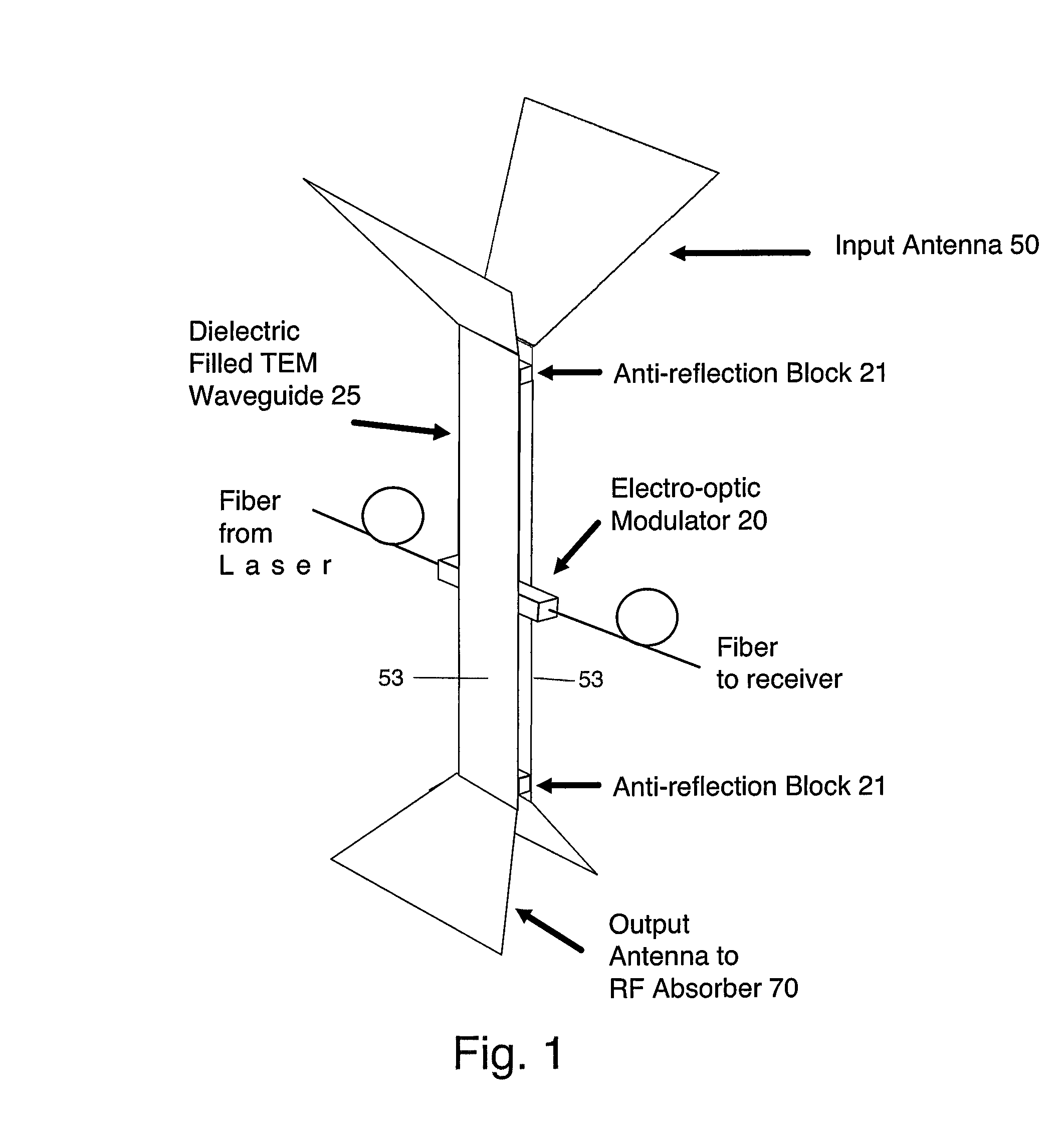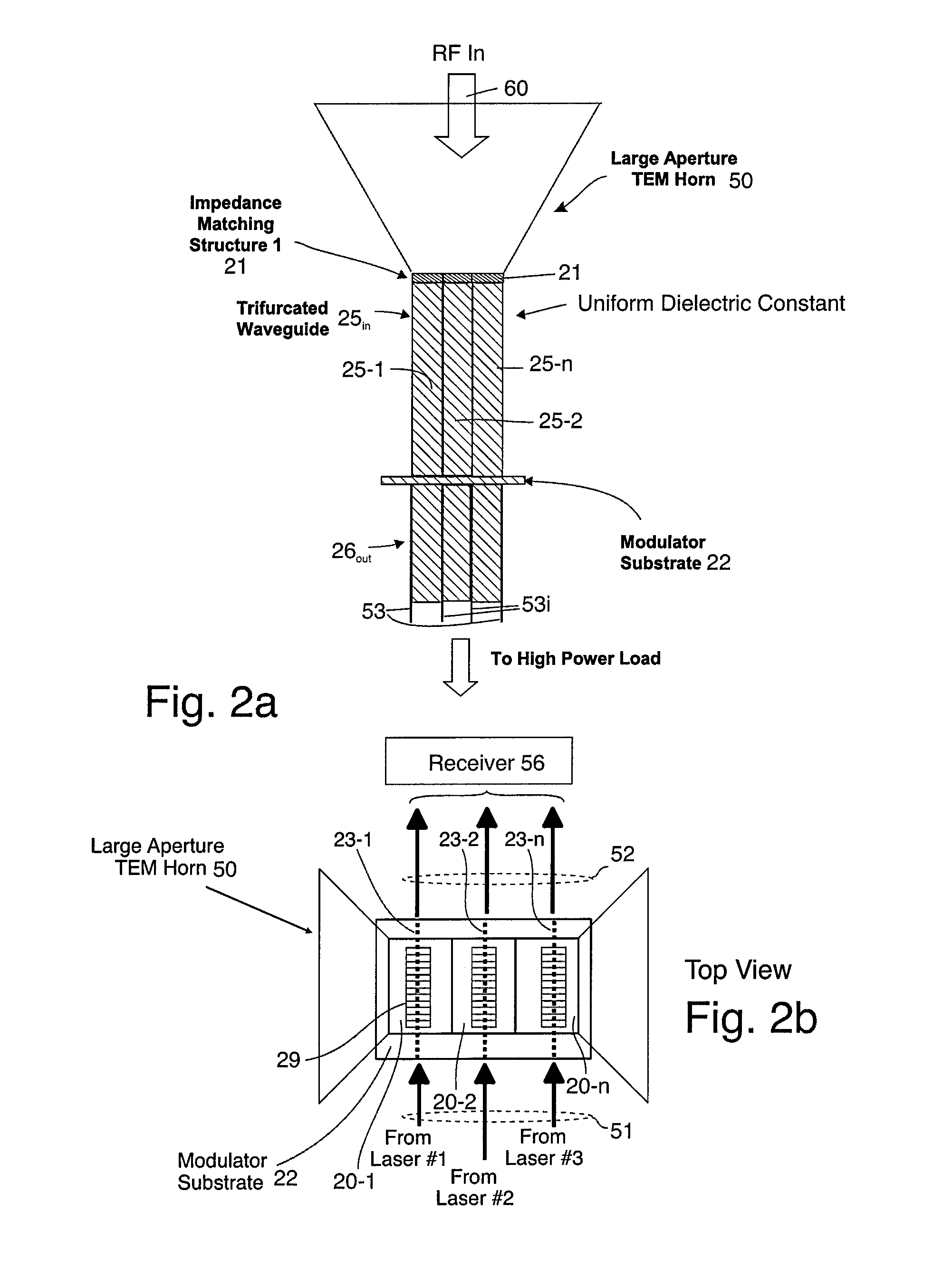RF receiver front-end assembly
a front-end assembly and receiver technology, applied in the direction of waveguide horns, waveguide type devices, electromagnetic transmission, etc., can solve the problems of limited amount of spark gaps, component circuit breakers such as capacitive shunts or capacitive shunts, and the adverse effect of high-energy electromagnetic fields incident on communication radios. , to achieve the effect of increasing optical link gain and enhancing modulation depth
- Summary
- Abstract
- Description
- Claims
- Application Information
AI Technical Summary
Benefits of technology
Problems solved by technology
Method used
Image
Examples
Embodiment Construction
[0048]A first embodiment of this invention wherein multiple optoelectronic modulators are coupled to a single antenna or antenna element is shown in FIGS. 2a and 2b. In these figures, a horn antenna 50 feeds an incident RF electromagnetic signal 60 into a transverse electromagnetic (TEM) multi-furcated RF waveguide 25in (the depicted waveguide is trifurcated, but may have as large a number of furcations or branches as desired). The multiple TEM waveguide sections, i.e., the reduced height TEM waveguides 25-1 through 25-n of the multi-furcated waveguide 25 guide the RF EM field to a modulator substrate 22 that has an array of modulators, or modulator sections, 20-1 through 20-n that are physically oriented parallel to each other. Each modulator 20-1 . . . 20-n contains an optical waveguide 23-1 . . . 23-n. Each modulator also could include an optional grating 29. Each modulator 20-1 . . . 20-n is electrically coupled to an associated reduced-height RF waveguide 25-1 . . . 25-n. Each ...
PUM
 Login to View More
Login to View More Abstract
Description
Claims
Application Information
 Login to View More
Login to View More - R&D
- Intellectual Property
- Life Sciences
- Materials
- Tech Scout
- Unparalleled Data Quality
- Higher Quality Content
- 60% Fewer Hallucinations
Browse by: Latest US Patents, China's latest patents, Technical Efficacy Thesaurus, Application Domain, Technology Topic, Popular Technical Reports.
© 2025 PatSnap. All rights reserved.Legal|Privacy policy|Modern Slavery Act Transparency Statement|Sitemap|About US| Contact US: help@patsnap.com



